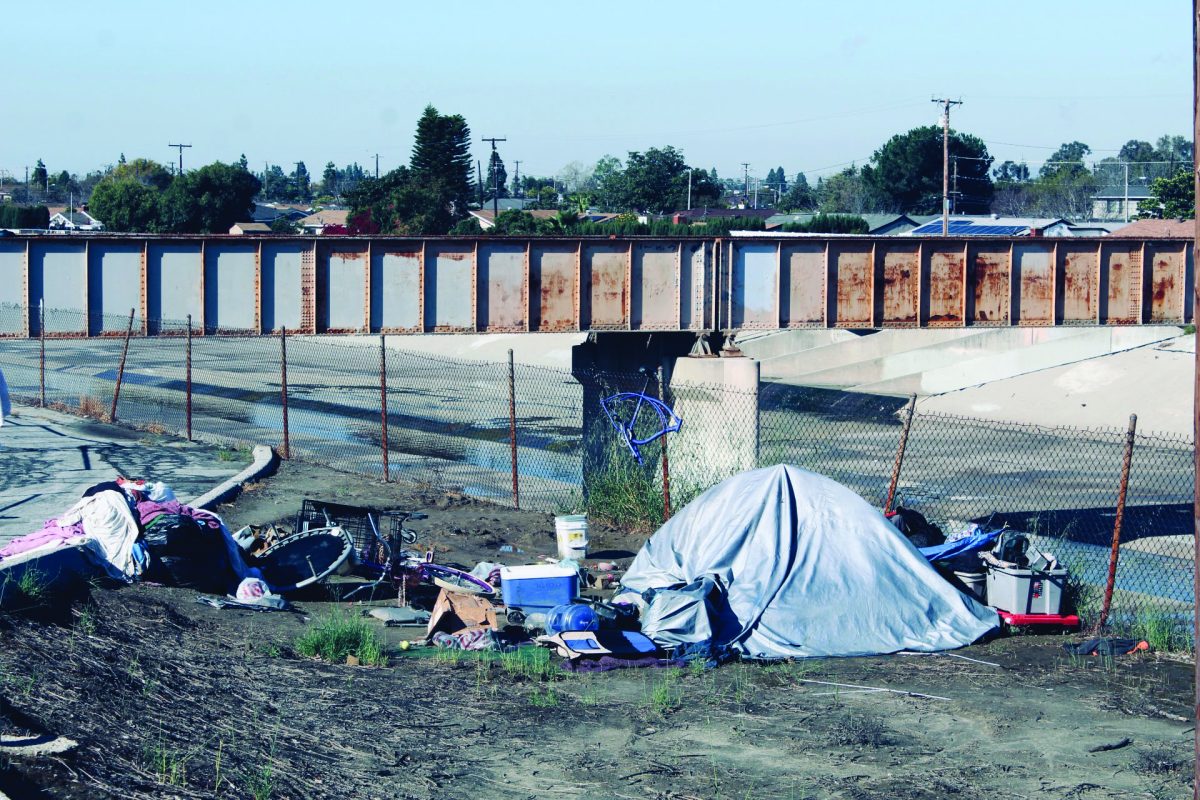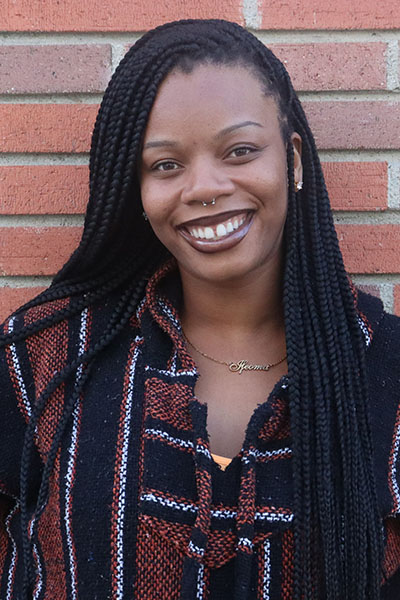“They’re taking away from the mom-and-pop shops. We’re not benefiting from what the city is doing. As African Americans we don’t do enough to stop these things — we don’t take the necessary steps to advocate for what we believe in to change our community.”
As gentrification gains momentum, historic neighborhoods become unrecognizable leading to increased housing costs and potentially displacing vulnerable communities.
Chrissann Stewart, an employee at Women of Color Salon, has seen the transition of Inglewood’s Housing and Business development over the years, which has resulted in how businesses in the area are slowly becoming affected by this issue.
In cities like Inglewood many businesses have been the focal point of being displaced from the new and improved “I-Wood.”
Inglewood is historically known to be a predominately African American and Latino community with lower-income demographics.
The city undergoes rapid urban redevelopment, the impact on local residents and the cultural fabric of various areas is felt.
Due to the redevelopment of Inglewood, many businesses have to accommodate those who are moving into the city for a bigger profit.
Women of Color Hair Salon owned by Lesa Marie near the Market Street Shopping District has been affected by this ongoing occurrence.
“It cost me almost $30,000 to upgrade my salon. With the new influx of people coming into the city they want to see that difference — It was time to do it, Gentrification pushed me to remodel my salon.” Marie said.
Small business owners like Marie struggle to keep up with the city’s increasing expenses that gentrification demands.
With gentrification sinking deeper, the cost of living in these gentrified cities has become too high for many to afford, resulting in the multitude of natives out of business and out home.

Recent statistics from the Los Angeles Homeless Services Authority reveal that over 70,000 people experience homelessness on any given night in Los Angeles County, majority being Black-Americans..
New venues built in Inglewood within the last three years such as the YouTube Theatre, Sofi Stadium and Intuit Dome have increased tourism and cost of living.
As these new venues emerged in the city, homelessness in the city of Los Angeles has risen by 12% from 2020-2023.
For those that are homeless in Los Angeles and the ones that work to fight it, the question that poses is what is the solution.
Andrew Linares, Community Engagement and Volunteer manager of Midnight Mission, works with these individuals directly and takes the job personally, knowing first hand what it feels like to be homeless himself.
“When I finally ended up on the streets, I came into the program after being on the street, give or take about five or six months. I felt this level of darkness right, that I’ve never felt before.” Linares said.
Organizations such as The Midnight MIssion in Los Angeles that offer recovery and shelter programs for the unhoused, see first hand the exact results of people who can not afford to live in the city and now live on the streets of the city.
“You really feel this level of loneliness and just like no hope at all right,” he said “ like what’s the point there’s no future in the horizon and the past is all blurred.”
One of the main difficulties these organizations face is the struggle to house the individuals in their programs.
Linares says it’s a very slow process in getting individuals in their program housed, needing a bit more resources while having very limited housing options geared towards individuals with certain qualifications.
“The housing portion for a lot of people it’s just a slow process and whatever is available is usually reserved for those for seniors or disabled.” Linares said. “ For there to be a waiting list, that says a lot of people are actually on the street.”
The lack of affordable housing mixed with the increase of new “high-rise” apartments, venues and businesses emerging throughout neighborhoods implements an unnecessary need within the city.
The unnecessary need being the profit that comes for the hands of these new businesses and none for the community that they have created less stability for.
According to USAFactTeam five of the highest counties/cities of unsheltered homeless individuals are in California with Los Angeles being the overall county and city.

Gentrification and Homelessness are two of the most primary issues that have long plagued cities across Southern California.
As the city undergoes a transformation, we are witnessing the forces of gentrification remold Inglewood at the expense of single adults, those of whom are local business owners and low-income residents having long called this city home.
These individuals are at high risk of struggling to find stable housing because they usually do not meet the requirements for most support programs or can only get help for a short time with limited funds.
In a recent study conducted by the The Civil Rights Project, 55% percent of all low socio-economic cities in Los Angeles have been gentrified since 2000.
According to the City of Inglewood’s Planning Department, the median household income averages $54,400 annually.
The average median salary being so stunted has made it very difficult for local residents to adjust to property owners raising rent annually due to Inglewood not having rent control.
The City of Inglewood Housing Protection Department has allowed landlords to increase their Residential Rental Properties with more than 5 units 3% during a 12 month period.
“Every year my rent has gone up tremendously. I’ve only been at my apartment for about 4 years —- they have gone up at least $300 on our rent every year and will continue to go up.” Stewart said.
With the cost of rent becoming higher, the alternative for local residents and business owners will have to move out and relocate to surrounding areas or worse, call the pavements of Inglewood their home.
“If they can put a cap on what they charge for leasing then that would change the dynamic. If we can’t afford it — who have been here in the city then we would have to move out of Inglewood.” said Marie.
There is an intricate dance between homelessness and gentrification that is crucial to comprehend, they intersect and intertwine, creating a socio-economic scenery that demands both awareness and thoughtful solutions.












